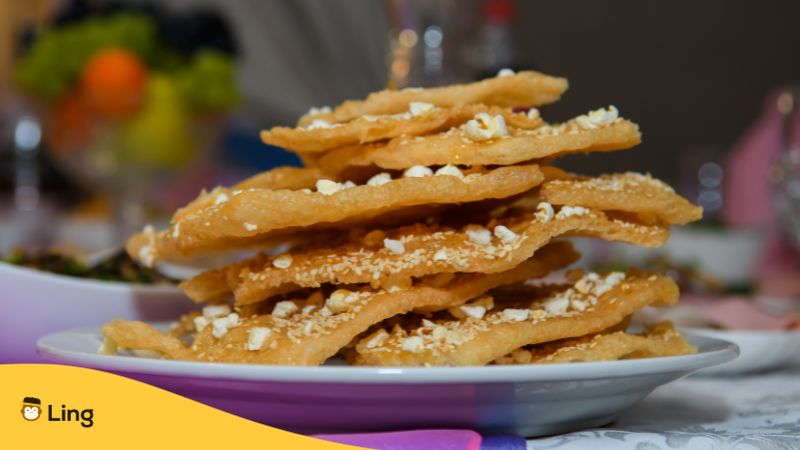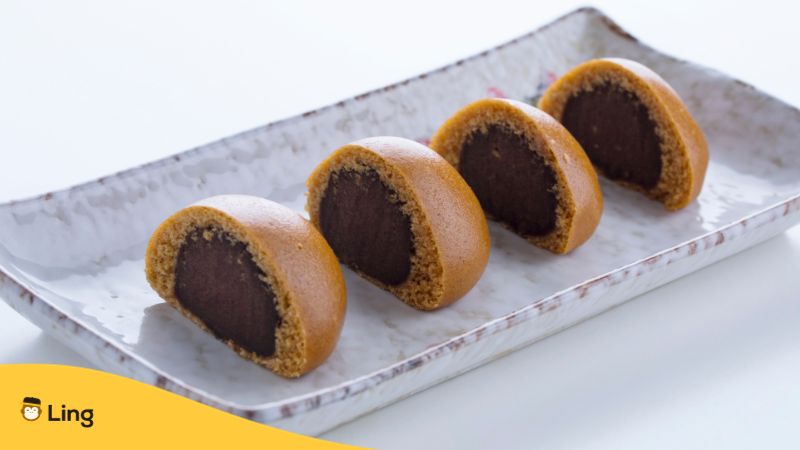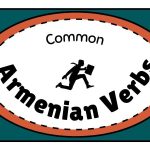Imagine you’re strolling through the bustling streets of Seoul, and the aroma of freshly baked cake, brownies, and rice treats has seeped through your nose straight to your now rumbling tummy. As you follow your senses to the nearest bakery, you wish that aside from your appetite, you also know enough Korean words for pastries and food.
If this isn’t just an “imagination,” I bet you would want to make sure you taste the various kinds of Korean desserts you’ve seen many times in films and TV shows. But how do you do that? I may not be able to provide you with the actual dessert, coffee, and different kinds of pastries, but I can teach you more vocabulary and terms related to these sweet treats in this post. Let’s start (시작해요)!
The Sweet Side Of Pronouncing Korean
Korean pronunciation is generally consistent, with clear rules on how you must pronounce each character. While it may initially seem intimidating to say your first word out loud, once you grasp the basics, you’ll find that learning a new Korean word each day is a simple feat, after all.
For instance, the Korean language distinguishes between aspirated and unaspirated consonants, which can affect the meaning of a word. Take, for example, “빵” (ppang), meaning “bread.” The initial “ㅂ” (b) sound is unaspirated, making it distinct from “방” (bang), which has an aspirated “ㅃ” (pp) sound. So, even a slight change in pronunciation can take you from enjoying a pastry to asking for a room!

The Basic Korean Words For Pastries
Now, let’s start savoring the sweet taste of learning a new Korean word, one delightful treat at a time. In this instance, you will add more vocabulary words and phrases related to delicious Korean pastries:
Bread – 빵 (Ppang)
Bread in Korea comes in many shapes, forms, and sizes. They can be steamed buns with mango, cheese, or milk fillings. They can be soft and fluffy loaves topped with grains, a hole-less doughnut, or crusty and well-baked baguettes. The main ingredient of bread is flour, and it can be egg bread or an eggless type. Most bread recipes require yeast for the bun to become fluffy, but others use baking soda and baking powder.
Snack/Cookie – 과자 (Gwaja)
Gwaja does not only mean cookies. You can get different types of snacks when you ask for one. It can be cookies with walnuts, mini cupcakes with corn and cheese, or golden-brown bread with grilled cheese inside. All these snacks have one thing in common: they make the perfect companion to a cup of tea or coffee.
Dessert – 디저트 (Dijeo-Teu)
This is the Korean word for that sweet, satisfying course served at the end of your meal. Whether it’s a slice of cake, a doughnut with creamy filling, a scoop of ice cream, red beans, or a fruit pie, this term covers it all.
Cake – 케이크 (Keikeu)
Korean cakes are best known for being cute or eye candy. But don’t let the presentation fool you; they taste as good as they look. You can get cakes with fruits, candies, and other food as toppings.
Rice Cakes – 떡 (Tteok)
These rice-based treats are a staple in Korean cuisine. Koreans love them as much as they love eating spicy vegetables. They are chewy and can be sweet or savory.

Overview Of Traditional Korean Pastries
Traditional Korean pastries, often referred to as “한과” (hangua) or “과자” (gwaja), have been enjoyed for centuries. Here are some terms you will likely encounter when searching for these items:
Fish-Shaped Pastry – 붕어빵 (Bungeoppang)
The batter of this bread is sweet, and it is poured into fish-shaped molds before adding fillings, such as red bean paste, chocolate, whipped cream, or custard.
Sweet Pancakes – 호떡 (Hotteok)
These pancakes are typically filled with a mixture of brown sugar, cinnamon, and crushed nuts.
Honey Cookie – 약과 (Yakgwa)
It’s a deep-fried cookie shaped into intricate patterns. The dough is lightly sweetened with honey, resulting in a delicious flavor that is not too sweet or bland.
Modern And Fusion Pastries
While traditional pastries remain a cherished part of the culinary landscape in Korea, modern and fusion pastries have added exciting new dimensions to the dessert scene:
Bakery – 빵집 (Ppangjip)
Now, this is where the magic happens. It’s a haven where bakers craft all imaginable sweet creations. You can order pastries and desserts inspired by flavors from around the world. It serves doughnuts, cake, bread, and other grains, and steamed ingredients turned into delightful food.
Macaron – 마카롱 (Makaron)
These colorful French confections, with their crisp shells and luscious fillings, have become a symbol of elegance in Korean pastry culture.
Brownie – 브라우니 (Beurauni)
The classic American 브라우니 (beurauni) has made its mark in Korea as well. Fudgy, chocolatey, and irresistibly decadent, brownies are a beloved treat that pairs perfectly with a cup of coffee or tea.
Ice Cream – 아이스크림 (aiseukeurim)
While not exclusively Korean, 아이스크림 (aiseukeurim) or ice cream plays a significant role in modern Korean pastry creations. Korean dessert shops are known for their innovative ice cream flavors and toppings, making them a cool and delightful dessert option, especially during the hot summer months.
Other Korean Words For Pastries
Here are the other Korean words related to pastries and desserts that will make you look forward to tasting local food delights:
| English | Korean Script (Hangul) | Korean Pronunciation |
| Pastry | 페이스트리 (peiseutori) | Pay-stri |
| Dessert | 디저트 (dijeo-teu) | Dee-juh-teu |
| Sweet | 달콤한 (dalkomhan) | Dahl-kohm-hahn |
| Sugary | 단맛의 (danmat-ui) | Dahn-maht-ee |
| Cream | 크림 (keurim) | Kuh-reem |
| Melt-in-your-mouth | 녹아드는 (nogadeuneun) | Noh-gah-deu-nun |
| Presentation | 프레젠테이션 (peurejenteisyeon) | Peu-reh-jen-tey-shun |
| Delicious | 맛있는 (masinneun) | Maht-ee-nun |
| Baking | 굽는 (gupneun) | Goop-nun |
| Flavor | 풍미 (pungmi) | Poong-mee |
Learn More Sweet Korean Words And Phrases With Ling
Learning a new language doesn’t have to end when you already know how to order the best pie or cake, or can follow a recipe written in Hangul. You can feed your hunger, but don’t let it stop!
In your quest to master a new language, after you have perfected your Korean skills, one app that can help you A LOT is Ling. This language learning application, available for download on both the Play Store and App Store, is equipped with a user-friendly interface and fun activities. So, bon appétit, and make language learning an enjoyable experience. Or, as they say in Korean, 맛있게 드세요 (mashitge deuseyo)!



































































2 Responses
만 넝 햐 세 요 , 감 사 함 니다 for sharing im the beginner to learn hanguel maam..
안녕하세요! Thank you for reading! If you love Korean and would like to learn hangul and more Korean vocabulary, try our Ling app!